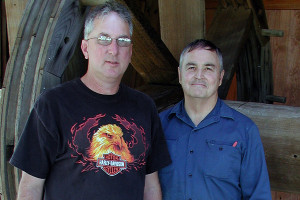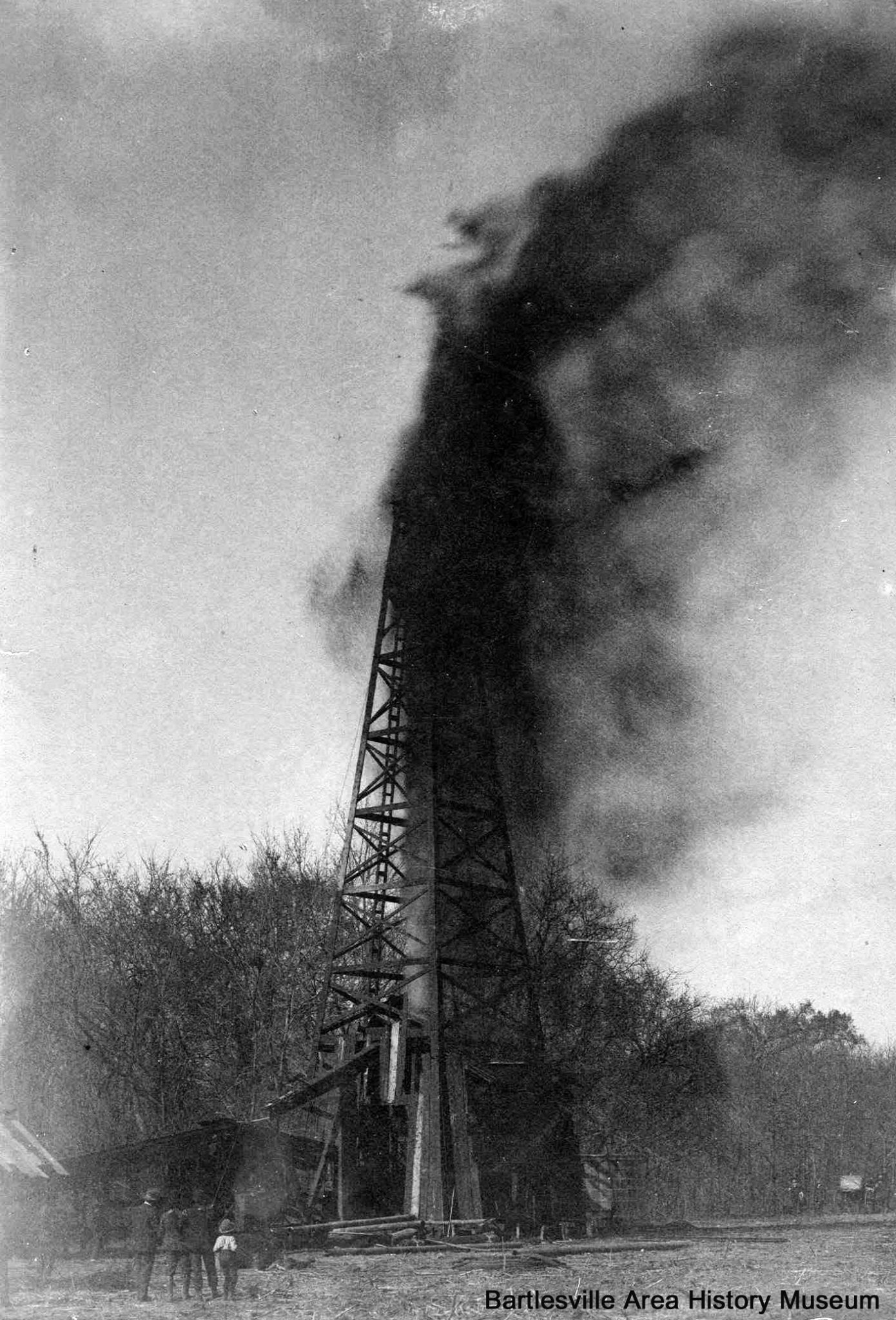Where Oklahoma Oil Began
The Significance of the Nellie Johnstone No. 1
On a crisp spring day in a little northeastern settlement of Indian Territory, a roar of oil and water erupted from a hole hammered into the earth a few steps from the Caney River. The event heralded the emergence of an enterprise that would transform the future of what would become Oklahoma.
The oil business was in its infancy when George Keeler, an early pioneer merchant of Bartlesville, noticed rainbow sheens glistening on area creeks. Anticipating the future importance of oil, Keeler, along with William Johnstone, Frank Overlees and John F. Overfield, all prominent citizens of early Bartlesville, set out to acquire a lease for drilling in 1892.
After they spent several years of securing rights to explore on land owned by the Cherokee Nation, the four men began drilling on the west bank of the Caney River. The endeavor proved successful on March 25, 1897 when the wildcat well, named for William Johnstone’s daughter, blew in as a gusher at 1,320 feet.
Three weeks later, on April 15, the well was completed. However, the well had to be plugged until there was a way to transport the oil to a refinery.
After the Santa Fe railroad reached Bartlesville, the Nellie Johnstone became the emerging state’s first commercial oil well with an estimated production of 30 barrels of oil per day in 1903. As tank cars took area oil production north to refineries, passenger trains bearing entrepreneurs and oil field workers streamed into town. Soon the frontier community was transformed into a flourishing boomtown and the heart of the region’s oil industry.
The Bartlesville oil boom drew into Oklahoma individuals and companies that would become national and international players in the petroleum industry including brothers Frank and L.E. Phillips (Phillips Petroleum Company, now ConocoPhillips and Phillips 66); H.V. Foster (Indian Territory Illuminating Oil Company, then Cities Services, now CITGO); Harry Sinclair (Sinclair Oil); George Getty and son J. Paul (Getty Petroleum); Bill Skelly (Skelly Oil); Armais Arutunoff (Reda Pump, now part of Schlumberger) H.C. Price (Price Pipeline Company) and others.
During its productive life, the Nellie Johnstone No.1 produced more than 100,000 barrels of oil. In fact, it was still producing when it was plugged in 1947 and donated as a permanent memorial to the City of Bartlesville on March 12, 1948.
Re-creation of the Nellie Johnstone No. 1

The centerpiece of Discovery 1 Park — the operating replica of the Nellie Johnstone No. 1 – is the achievement of two local companies with a long history of community involvement. Service and Technology Corporation (STC) handled the design and engineering tasks for the project and its subsidiary firm, Service and Manufacturing Corporation (SMC), managed all the fabrication work.
Using drawings and photos from the late 1800s and early 1900s, STC personnel headed by project manager Richard Conover laid out plans for an operating version of the early day cable tool drilling rig. Construction of the rig, which was built in several modules beginning with the derrick tower, was constructed by a team of welders, carpenters and other craftsmen under the direction of Jerry Ruddick, SMC manager.
Aware that the two earlier Nellie Johnstone No. 1 replicas had eventually deteriorated, the STC engineering team set out to build a re-creation that would withstand the elements. The result is a wood-clad structure with a heavy steel frame. While the previous replicas had rested on timber skids, the new re-creation is fixed to concrete pilings sunk 30 feet below the surface.
The durability of the “new Nellie” is equaled by the fascination of its operation. The big rig operates just like the real thing of more than 100 years ago — from the throb of its heavy one-piston engine, to the hum of its wide drive belt, to the whirl of its giant band wheel to the steady up-and-down motion of the massive walking beam. To make all this action possible, the employees of STC spent more than a year refurbishing old equipment and fabricating new elements based on archival information.
The highlight of the operating rig is the gusher (of high-pressure water) that spouts high above the 84-foot tall derrick, reminiscent of the “blow-outs” of the early day oil business. A specially designed array of nozzles, located at the exact spot of the original Nellie Johnstone No. 1 well bore, projects a fountain of water from the well deck up through the derrick’s crown block.
Rig and Gusher Tours
The Nellie Johnstone No. 1 is the only operating and gushing oil derrick of its kind in the world.
Rig operation and gusher demonstrations are available for groups from April through November. Contact Us for information and reservations.
